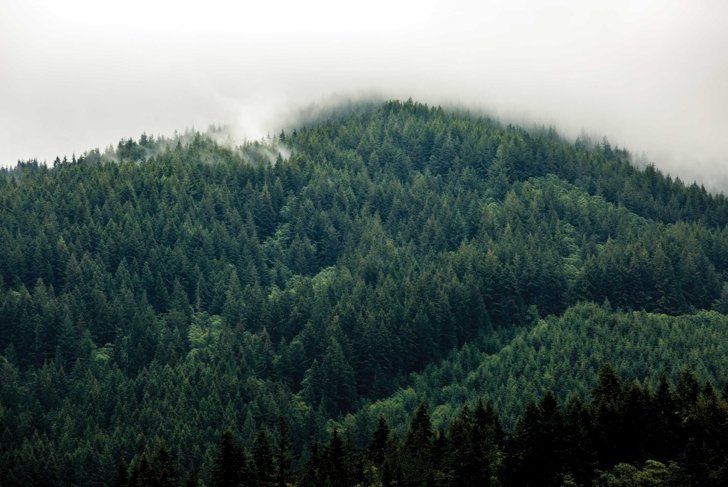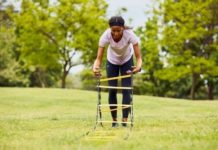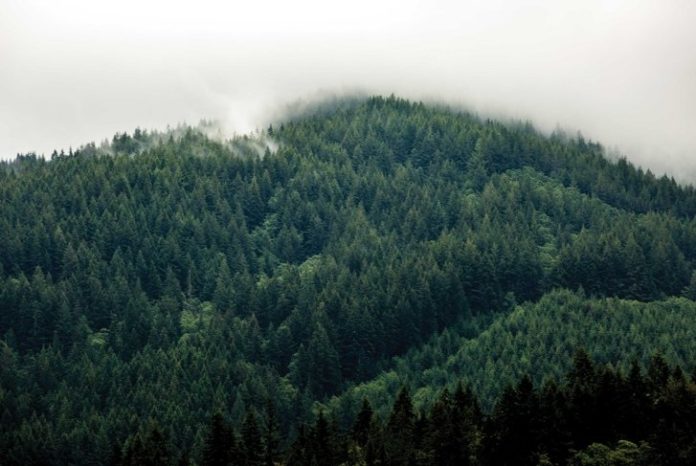
Learning to forage can transform the way you see the world around you—plus, it’s a free source of vitamin-rich foods, and it can improve your mental health. Learn to flex those foraging muscles responsibly and start your first wild harvest.
I first tried foraging this spring. Since then, every time I head outdoors, I see a little more about the wild world around me. Those pale green tips on the fir trees that I’d never really noticed before? Now I know they taste of citrus, and I could harvest them and make a refreshing tea.
I know those prickly-looking thorns on that new-season salmonberry are actually soft. If I found a nice, plump green shoot, I could peel it right off and enjoy a wonderfully fresh spring green that has a subtle taste of melon and raspberry.
In short, I’ve discovered that a little foraging know-how changes everything, with every hike in the wilderness now transformed into a potential picnic.
Wild growth
As a first-time forager, I was a little anxious about not knowing what to do, but heading out on a guided walk gave me the confidence to get out there and start foraging for myself. I visited Vancouver’s Stanley Park on a plant identification walk with Ficus Chan from the foraging tour company Swallow Tail Tours.
“A foraging walk is great for people of all ages to get outside and connect with their natural surroundings,” says Chan. “It’s a chance for people to learn and share knowledge about edible wild plants: where to find them, how to recognize them, and how they can be harvested and prepared for a meal.”
I’m far from alone in my burgeoning interest in foraging. Canada is the world’s fourth-largest organic food market, and organic produce now represents 1.7 percent of total food sales in the country. A growing desire to become more educated about where food comes from and a wish to ensure it’s of the best possible quality has unsurprisingly coincided with a rise in foraging.
Why forage?
“Nutrition is involved, of course,” says Vancouver chef Chris Whittaker. “Lots of wild foods are rich in vitamin C and omega-3. Look back at the voyageurs, for instance. They were travelling across Canada just on pemmican. They had to rely on other food sources, and foraging is a great way to supplement your food source, too.”
Whittaker is a lifelong forager and the brain behind the restaurant aptly named Forage.
“It’s easier to execute a vision when it means a lot to you, and ‘Forage’ was right in my wheelhouse,” he says.
Diners at the award-winning restaurant are treated to seasonally foraged delights such as conifer gnocchi, which has a delicate whisper of eucalyptus and citrus. Nettle risotto, which sings with the purest green vegetal hit, and addictively crunchy pickled sea asparagus are also among his creations. There’s no better way of experiencing the true taste of the province—or any province—than with its locally foraged wild harvest.
Health benefits
Foraging in the wilderness isn’t just about feeding the body. For Whittaker, it’s a way to reconnect with nature and to let the stress of modern life (including running two busy restaurants) fall away.
“Don’t they say there are chemicals that fall from the trees that make you calmer and [help] think better?” says Whittaker with a grin.
That’s not an old wives’ tale. Research on “forest bathing” has shown that plants emit chemical compounds that have beneficial effects on humans. Being in a forest for just 30 minutes can lower levels of the stress hormone cortisol.
Add to that the physical health benefits of burning calories from walking in the wild as you forage for food, and you’re really going to have earned whatever you’ve collected. “I think it’s good to burn calories before you put them back in,” states Whittaker. “I definitely get healthier when I’m out.”
Starting your wild harvest
Although people have been foraging for centuries, Whittaker warns that it’s no walk in the park.
Be prepared
“I was on a trip recently and saw people who just did not seem prepared to go deep into the woods,” says Whittaker with a sigh. “They were in flip-flops! If you’re getting out into the wilderness, you need to remember: there are no walking paths, and it’s often not the easiest terrain. I think it’s important to have the right gear: footwear, survival gear, and so on, and know about orienteering and how to map read. It’s a romantic idea that you can skip through a field with your foraging basket picking berries; you are in the wild, so do be mindful!”
Do your research before you head out into the wild: sign up for an orienteering course, get the right boots and gear, and don’t forget gloves for harvesting nettles or dealing with prickly plants.
Always have a good identification book on hand, and before you go, acquaint yourself with poisonous plants in the area. Investigate which parts of edible plants are safe to eat, and when.
In addition, it’s important to assess the environment where you’re foraging to make sure there is no pollution or contamination in the area.
“I always go far off the beaten path when I’m in BC or Ontario,” says Whittaker.
It’s useful to have an idea of where you’re most likely to find edibles. One of the best ways to do this is to go out with experienced foragers, as even a good guidebook is no replacement for someone with an intimate knowledge of the area.
“It’s good to try and think ahead and plan what you might be able to find. For instance, so much thrives in wetter areas, like valleys, or places that get plenty of sun,” says Whittaker. “Over in the Maritimes, there’s a whole realm of seaweeds and sea vegetables to get into, too.”
Weeds and herbs can sweat, so don’t put your foraged harvest in a plastic bag; use a basket.
Harvest sustainably
Although a passionate advocate for foraging, Whittaker warns that the rise of wild harvesting could risk plant sustainability. In Quebec, for instance, the popularity of foraging for ramps caused their numbers to plummet. As of 1995, the foraging of these tender wild leeks has been banned for commercial purposes, and the plant is now listed as a vulnerable species.
“You have to be plant aware,” says Whittaker. “Never take more than 10 percent of anything you find, and always look to see what’s already been taken. For instance, you shouldn’t pick more than two or three fiddleheads per plant. You have to leave something so the plant survives and you can pick into the future.”
Don’t forget: you’re not the only one who relies on these food sources. Wildlife needs these foods to survive.
Once you get started down the sustainable foraging path, your pantry will never be the same again. “You can have a lot of fun with it,” says Whittaker with a grin. “You can make wine or vinegar from dandelions, make salads from the greens. I love nettles: you can make soup, sauce, quiche, gnocchi—so many things! I even sub in nettles for spinach in spanakopita and make a chimichurri using all these wild bright greens. It’s so much fun.”
And me? Right now, I can’t wait for late summer so I can get out to the Sunshine Coast of BC and harvest salal berries to make an authentically Canadian version of sloe-infused gin.
Ficus Chan and Chris Whittaker’s top 4 tips for first-time foragers
- Stay within the law! Most Canadian parkland, whether it’s federal, provincial, or regional, has a rule that you cannot forage from it. Crown land is open for foraging, but you need to know if there’s a leaseholder or tenant in place who you’ll need to get permission from first.
- Only pick what you can safely identify. Your first foraging trip can be daunting, but don’t worry about knowing every single plant out there. Take your identification book and target just one plant to make it less overwhelming. Start with something simple—then it’s a triumph when you find it and get to taste it. On your next trip, find something new and slowly build your knowledge that way.
- Get creative with how you use foraged food. Spring flowers such as elderflowers or big leaf maple flowers can be used to infuse a simple syrup. Most (though not all) conifers can be made into a tea: you’ll find spruce, hemlock, and true fir trees across Canada, and you can harvest the needles. The soft, light green spring tips are the nicest part, but when they get older with a woody stem, you can still use them.
- Know what’s in season. Spring is the time when you’ll find a lot to forage: tips, shoots, and conifer new growth. Summer is berry season across Canada, but keep in mind that bears love those sweet treats too, so stay bear-aware and safe.
Always be cautious when trying new foods, and speak with your health care practitioner about new teas and herbs, particularly if you are pregnant or have a medical condition.










